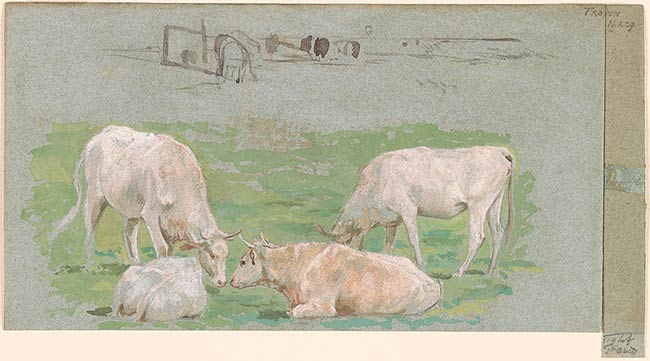
Troyon was one of several artists who began their careers as porcelain painters but emerged successful after finding a suitable subject for easel paintings. The artist's revelation happened during an 1847 trip to Holland, where he studied the works of seventeenth-century painters Albert Cuyp and Paulus Potter, who excelled at depicting livestock in bucolic settings. Troyon soon followed their example and devoted himself almost exclusively to animal painting, with a special focus on bovine life. This sheet features a swift study in brown wash at the top, outlining a view of animals in a field, with a close study in watercolor of four cows feeding in a pasture. Troyon has studied the cows from all angles, with a grazing cow seen in three-quarters view alongside one resting and seen from behind, with a pair resting and grazing seen in profile. In the 1850s, Troyon frequently paired standing and reclining cows at pasture in his paintings, and the forms of these animals recur in several compositions from the decade. In his close study of animals and nature, Troyon followed a long tradition and brought to it a new sense of monumentality and respect for the beauty and variety of the common cow.
This sheet was one of four drawings with Bill Martin and Brian Sewell in 1969-70. A second sheet from the cache, a watercolor sketch on blue paper depicting a village whose rooftops are seen among trees in the distance, is currently in the Fitzwilliam Museum, Cambridge (PD.68-1978). The site has not yet been identified.
Inscribed at upper right in watercolor, "Tro[yon N.A. 29].”
Sewell, Brian, former owner.
McCrindle, Joseph F., former owner.
